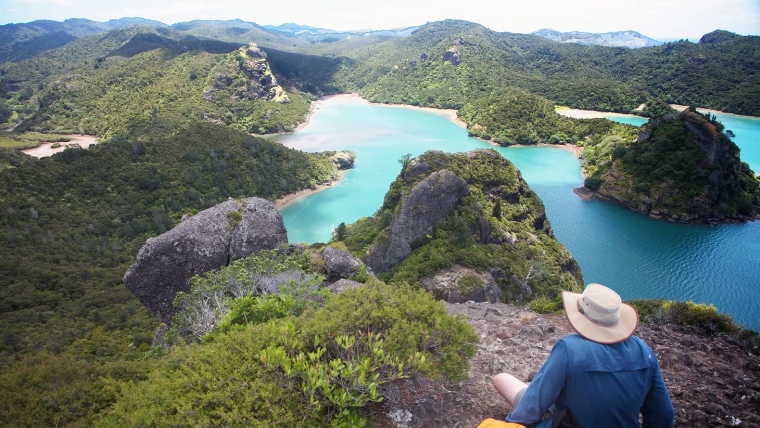
Our back-end system upgrade is now complete. Apologies for any inconvenience. Comments may take a while yet to return.
Here's our summary of key economic events overnight that affect New Zealand with news delta is giving the Aussie economy an increasingly hard time.
Firstly however, Fed boss Powell gave his widely-anticipated Jackson Hole speech overnight but it was something of an anti-climax with his repeating much of what he said after the last Fed review. He reaffirmed the central bank’s plan to begin tapering this year by reversing easy-money policies and detailed why he expects a recent rise in inflation to be transitory.
Tapering now will leave the Fed’s balance sheet at a bit less than US$8.5 tln or about 37% of GDP. (The RBNZ’s balance sheet is about 26% of NZ GDP. In Australia, it is just under 30%.)
The relative dovishness of Powell’s speech saw the USD slip, gold rise, and benchmark bond yields fall back.
Meanwhile, the Biden Administration (OMB) is more hawkish and has raised its forecast of inflation in Q4-2021 to +4.8%. It also raised its growth forecast to +7.1 in the same period. Budget deficits as a share of GDP are expected to be a full 1% less at -6.3% because of this higher growth. (They were -13.9% last year.)
In China, prices for iron ore rose again yesterday, reversing the recent downward trend. And coal prices stayed at their very high level.
But the growth of profits generated by China’s industrial companies slowed for the fifth straight month in July, adding signs that the post-pandemic recovery in the world’s second-biggest economy is losing momentum.
And China’s policy makers are acknowledging they have a land-use problem. They are concerned about the loss of arable land. Of course some is going to urbanisation, but more is going into forestry and horticulture.
In Australia, it is becoming clear that the country has probably slipped back into recession. Q3 economic activity will probably decline as it did in Q2, so that meets the technical definition of a recession. Australia went 28 years without one, and now it has had two in the past two years.
The pall over economic activity essentially relates to the number of jobs being lost. This is giving new life to the business and right-wing media covid-deniers push to open back up despite the public health risks.
There were another 882 new community cases in NSW yesterday with another 773 not assigned to known clusters, so they remain out of control. They now have 13,884 locally acquired cases. Victoria is reporting another 79 new cases today, so it is tough there too and their lockdown is extended. Queensland is now reporting two new cases. ACT has 21 new cases. Overall in Australia, more than 32% of eligible Aussies are fully vaccinated, plus 23% have now had one shot so far.
Wall Street is ending the week at a record high with a full +1.0% gain today to cap the weekly gain at +1.4%. Earlier, European markets were all up a more modest +0.4% across the board. Yesterday, Tokyo ended yesterday down -0.4% but that cemented in a +1.7% gain for the week. Hong Kong ended flat yesterday for a +1.0% rise for the week. Shanghai rose +0.6% yesterday and starred with a +2.5% weekly jump. The ASX200 fell marginally yesterday and booked a +0.4% weekly gain, while the NZX50 Capital Index changed little yesterday to end with a +0.9% weekly rise.
The UST 10yr yield has slipped -3 bps to 1.31%. The US 2-10 rate curve is marginally flatter at +109 bps. Their 1-5 curve is much flatter at +73 bps, and their 3m-10 year curve is also flatter at +127 bps. The Australian Govt ten year benchmark rate starts today at 1.19% and little-changed. The China Govt ten year bond is at 2.91% and up another +2 bps. And the New Zealand Govt ten year is now at 1.72% and up +5 bps.
The price of gold is up a strong +US$25/oz from this time yesterday, and now at US$1817/oz which is its highest in a month and a gain of +2.1% in a week.
Oil prices have firmed by about +US$1, so in the US they are now just under US$69/bbl, while the international Brent price is just under US$72/bbl.
The Kiwi dollar opens today +½c firmer at 70.1 USc. Against the Australian dollar we are still at 95.9 AUc. Against the euro we are firmer at 59.4 euro cents. That means our TWI-5 starts today up at 73.2 with a +1.8% appreciation for the week but still in the middle of the 72-74 range of the past ten months.
The bitcoin price has risen +2.8% from this time yesterday to US$48,370 which is -1.4% lower than this time last week. Volatility in the past 24 hours has been moderate at just over +/- 2.2%.

We welcome your comments below. If you are not already registered, please register to comment
Remember we welcome robust, respectful and insightful debate. We don't welcome abusive or defamatory comments and will de-register those repeatedly making such comments. Our current comment policy is here.